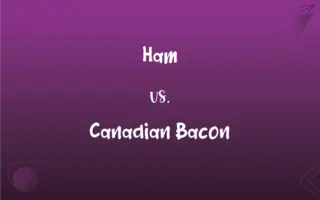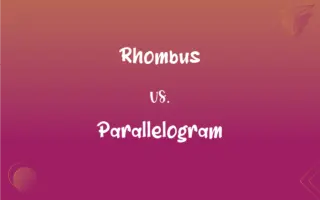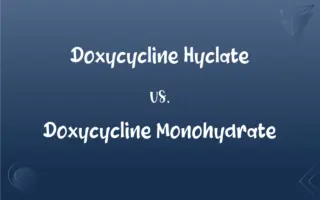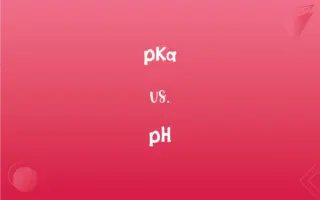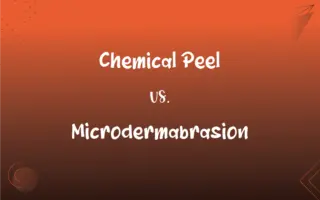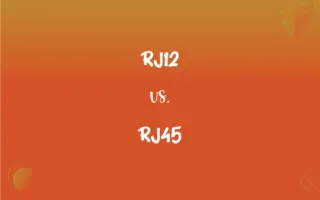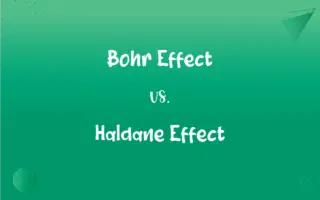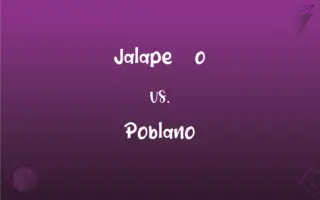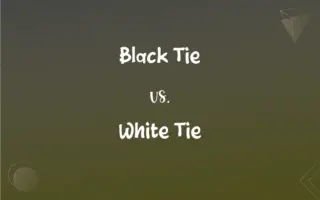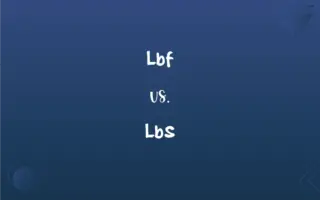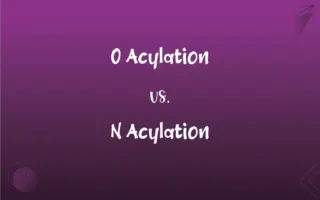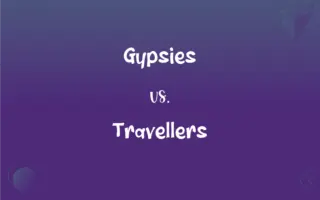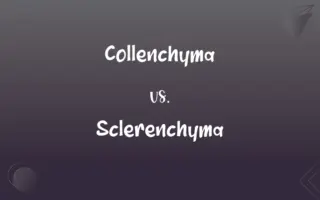Maroon vs. Burgundy: What's the Difference?
Edited by Janet White || By Aimie Carlson || Updated on October 2, 2023
Maroon is a dark brownish-red color, while burgundy is a deep red hue with a purple or brownish tinge, often associated with the wine of the same name.
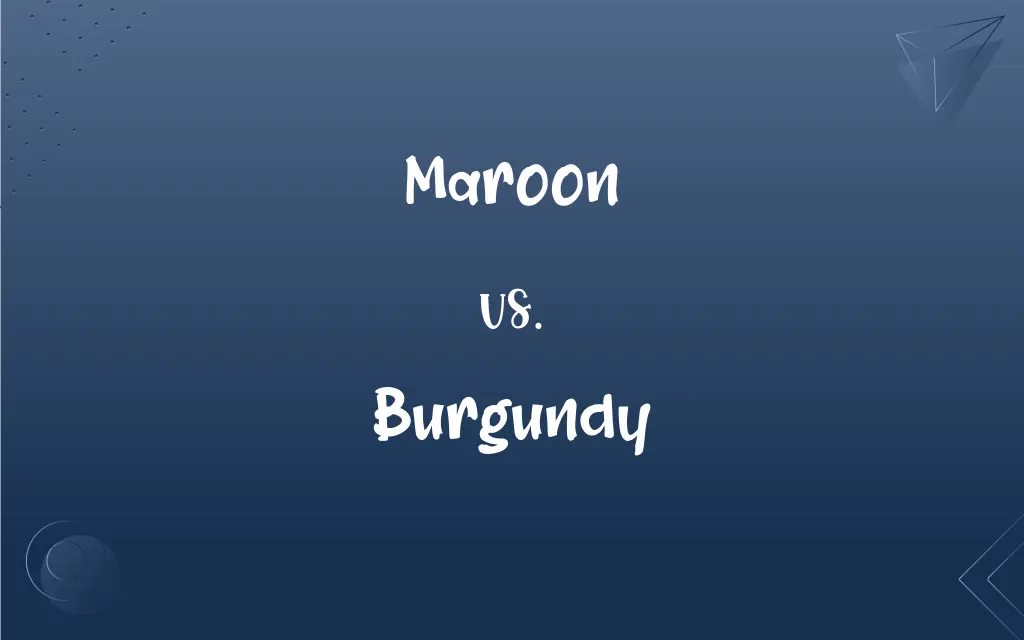
Key Differences
Maroon typically denotes a color that's a blend of red and brown, creating a rich, dark hue. In contrast, burgundy reflects the color of the wine produced in the Burgundy region of France, leaning more towards a deep red with hints of purple.
When visualizing maroon, one might think of chestnuts or autumn leaves, as it carries a distinctly brownish undertone. Burgundy, meanwhile, evokes images of the rich, red wines it's named after, presenting a purplish-red richness.
Fashion and design industries use both maroon and burgundy for their versatility and depth. However, burgundy often holds a more sophisticated and elegant air, while maroon can be seen as more rustic or earthy.
Both maroon and burgundy are popular choices in various fields, from clothing to interior design. While maroon often adds warmth and earthiness to designs, burgundy imparts a sense of luxury and depth.
It's worth noting that while the distinctions between maroon and burgundy are clear to designers and color enthusiasts, the average person might use the terms interchangeably, though they represent different shades on the color spectrum.
ADVERTISEMENT
Comparison Chart
Primary Undertone
Brownish-red
Purplish-red
Association
Chestnuts, autumn leaves
Wine from Burgundy region
Feel & Usage
Rustic, earthy
Sophisticated, elegant
Popularity in Fashion
Versatile for both casual and formal wear
Often linked to luxury and deep richness
Origin of Name
Derived from the French word 'marron' (chestnut)
Named after the wine from Burgundy, France
ADVERTISEMENT
Maroon and Burgundy Definitions
Maroon
A hue resulting from blending red with brown elements.
The maroon drapes gave the room a warm and cozy feel.
Burgundy
A deep red color with hints of purple or brown, resembling certain wines.
She sipped on a glass of burgundy wine while enjoying the view.
Maroon
A shade reminiscent of autumn leaves or chestnuts.
He chose maroon for his study, wanting an earthy touch.
Burgundy
A shade symbolizing richness, luxury, and sophistication.
His burgundy tie added a touch of elegance to his outfit.
Maroon
A dark brownish-red color.
She wore a maroon scarf to complement her beige coat.
Burgundy
A color often chosen for its association with elegance and opulence.
The restaurant had burgundy curtains that exuded a luxurious ambiance.
Maroon
A deep, rich red that leans towards brown.
Her maroon lipstick was her signature look.
Burgundy
A hue named after the Burgundy wine-producing region in France.
The burgundy velvet couch was the centerpiece of the living room.
Maroon
A color often used to signify warmth, earthiness, or rustic charm.
The maroon accents in the decor brought in an inviting atmosphere.
Burgundy
A purplish-red that often denotes depth and luxury.
She wore burgundy nail polish for the gala event.
Maroon
To put ashore on a deserted island or coast and intentionally abandon.
Burgundy
Any of various red or white wines produced in the Burgundy region of France.
Maroon
To abandon or isolate with little hope of ready rescue or escape
The travelers were marooned by the blizzard.
Burgundy
Any of various similar wines produced elsewhere.
Maroon
A descendant of such a slave.
Burgundy
Burgundy A dark grayish or blackish red to dark purplish red or reddish brown.
Burgundy
Alternative case form of Burgundy(red wine).
Burgundy
(color) A dark red colour tinged with purple, like that of Burgundy (red) wine.
FAQs
Do the names maroon and burgundy have origins in the French language?
Yes, maroon is derived from the French word 'marron' meaning chestnut, and burgundy references the French wine-producing region.
Do both maroon and burgundy have significance in fashion?
Yes, both colors are popular in fashion, with burgundy often seen as more luxurious and maroon as more earthy.
Can both maroon and burgundy be used in interior design?
Absolutely. Both colors are popular choices, with maroon adding warmth and burgundy providing a sense of depth and luxury.
Can the terms maroon and burgundy be used interchangeably?
While sometimes used interchangeably in casual conversation, they represent different shades on the color spectrum.
Is maroon a shade of red or brown?
Maroon is primarily a shade of red but with notable brown undertones.
Where is the Burgundy region located?
The Burgundy region is in France and is renowned for its wine production.
Which color would be more rustic, maroon or burgundy?
Maroon, with its brown undertones, is often seen as more rustic compared to burgundy.
How is burgundy different from maroon?
Burgundy is a deep purplish-red, often associated with the wine of the same name, while maroon is more brownish-red.
Are there specific occasions where one might choose burgundy over maroon?
While personal preference plays a role, burgundy, being associated with luxury, might be chosen for more formal or elegant occasions over maroon.
Is burgundy named after something specific?
Yes, it's named after the wine produced in the Burgundy region of France.
Which is darker, maroon or burgundy?
Maroon often appears darker due to its brown undertones, while burgundy has a deep, rich red hue with purple tinges.
Is maroon linked to any specific seasons?
Maroon is often associated with autumn due to its resemblance to autumn leaves and its earthy warmth.
Is the wine from Burgundy always of a burgundy color?
Not always. The Burgundy region produces both red and white wines, but the term "burgundy" as a color refers to the deep red wine.
What is maroon?
Maroon is a dark brownish-red color.
Which color is warmer, maroon or burgundy?
Maroon, with its brownish undertones, often feels warmer compared to the deep richness of burgundy.
About Author
Written by
Aimie CarlsonAimie Carlson, holding a master's degree in English literature, is a fervent English language enthusiast. She lends her writing talents to Difference Wiki, a prominent website that specializes in comparisons, offering readers insightful analyses that both captivate and inform.
Edited by
Janet WhiteJanet White has been an esteemed writer and blogger for Difference Wiki. Holding a Master's degree in Science and Medical Journalism from the prestigious Boston University, she has consistently demonstrated her expertise and passion for her field. When she's not immersed in her work, Janet relishes her time exercising, delving into a good book, and cherishing moments with friends and family.
